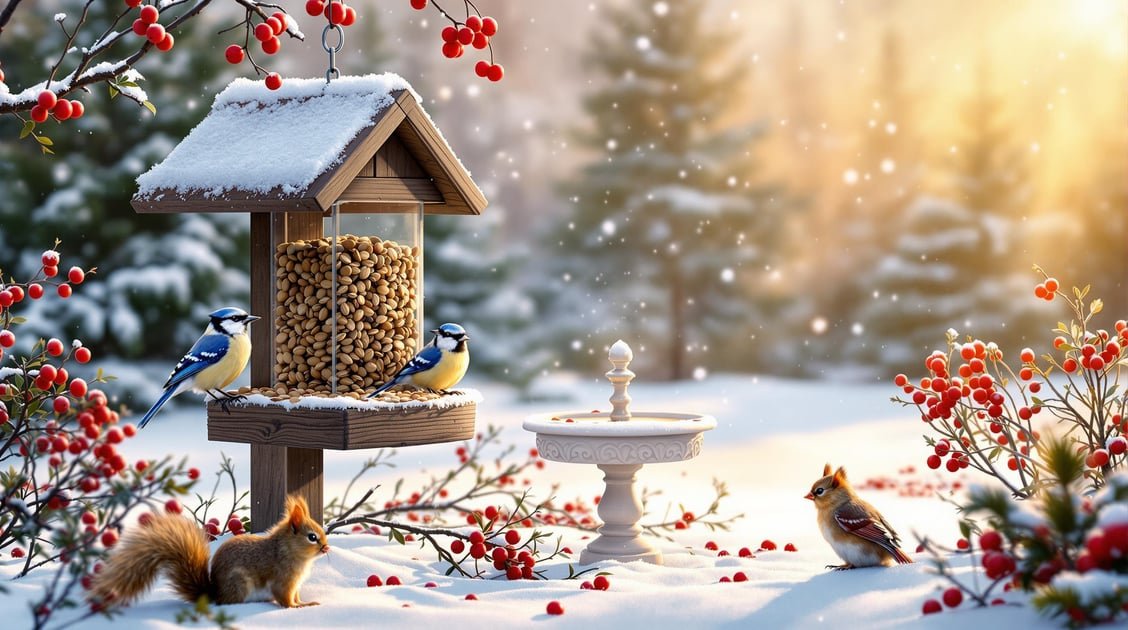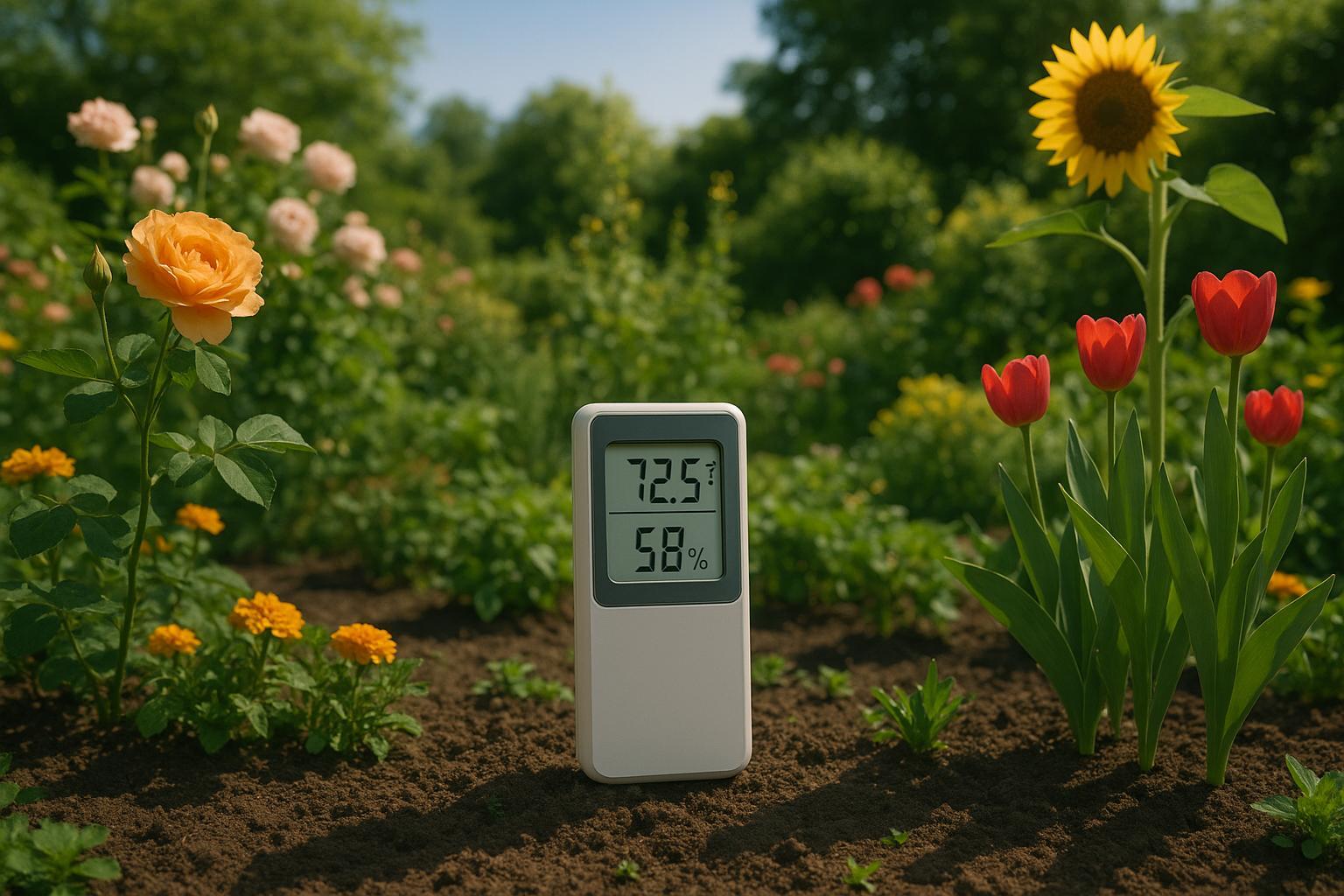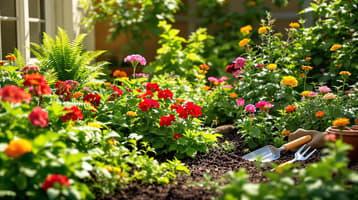Ultimate Guide to Winter Wildlife Gardening

Want to help wildlife during winter? Your garden can be a lifeline for birds, small mammals, and insects when food and shelter are scarce. Here's how:
- Food: Plant native shrubs with berries and perennials with seeds.
- Water: Use heated birdbaths or water heaters to prevent freezing.
- Shelter: Keep evergreens, brush piles, and natural ground cover for protection.
Even small spaces like balconies can support wildlife with the right plants and containers. Tools like AIGardenPlanner can help you choose winter-hardy plants and design a garden tailored to local wildlife needs.
Quick Tip: Avoid heavy pruning in winter to protect hibernating animals and nesting birds. Keep feeders and water sources clean to prevent disease.
Turn your outdoor space into a winter haven for wildlife with these simple steps.
How To HELP WILDLIFE In YOUR GARDEN This Autumn & ...

Basic Elements of Winter Wildlife Gardens
A winter wildlife garden ensures animals have access to food, water, and shelter during the colder months when these essentials are harder to find.
Supporting Wildlife During Winter
To create a thriving winter wildlife garden, focus on these key elements:
- Food: Include native shrubs that produce berries and perennials that generate seeds.
- Water: Provide a water source that won’t freeze, so animals can drink even in icy conditions.
- Shelter: Use evergreens or brush piles to offer protection from harsh winter weather.
Choosing the right native plants is the foundation of meeting these needs.
Selecting Native Plants
Native plants, naturally suited to your area, provide dependable food and shelter for wildlife. Tools like AIGardenPlanner can guide you in picking plants that can withstand winter and support your garden’s ecosystem.
When planning, think about the mature size and growth patterns of the plants to maintain a well-balanced garden. Start with winter-hardy native species and adjust based on the types of wildlife your garden attracts over time.
Adding Wildlife Features for Winter
Turn your garden into a cozy refuge for wildlife during winter by including features that cater to the needs of local animals. These additions go beyond the basics, providing extra support when it's needed most.
Natural Ground Cover
Leave fallen leaves and other natural debris where they are. They create shelter for small animals and insects looking for a safe place to hide from the cold.
Food Sources and Feeders
Set up bird feeders and plant winter-blooming species to ensure a steady food supply for visiting wildlife.
Winter Water Sources
Keep water available by using heated birdbaths or water heaters to prevent freezing. Refresh the water regularly to ensure it's always accessible.
Use AIGardenPlanner's tools to map out the best spots for these features and choose hardy plants that thrive in winter while supporting local wildlife.
sbb-itb-4d6a8dd
🚀 Ready to Reinvent Your Garden?
Join thousands of homeowners who have transformed their gardens using our AI design tool. Upload one photo to explore endless possibilities.
Get your AI garden designs →Winter Garden Care for Wildlife
Keep your garden a safe haven for wildlife during winter with thoughtful maintenance that respects local ecosystems. Here are some practical tips to help you care for your winter wildlife garden.
Pruning Tips for Winter
Limit pruning to avoid disrupting hibernating animals or nesting birds. Leaving natural shelters intact is key to supporting wildlife during colder months. Consider using tools like AIGardenPlanner to time your pruning when it’s least likely to affect wildlife activity.
Caring for Feeders and Water Sources
Maintaining clean feeders and water sources is essential during winter. Regularly check and sanitize them to prevent the spread of disease and ensure animals have reliable food and water. A consistent care routine helps make your garden a welcoming and safe environment for local wildlife.
Small Space Wildlife Gardens
Even with limited space, container gardening can provide food and shelter for wildlife during winter. This approach lets you support local wildlife, no matter the size of your outdoor area.
Making the Most of Your Space
Using containers efficiently is key. Place them where they'll get enough sunlight and protection from harsh weather. Tools like AIGardenPlanner can help you plan your setup by analyzing your layout and local conditions.
Plants for Winter Containers
Choose hardy plants that thrive in your climate and can survive in containers. These plants can offer both shelter and food for birds and small mammals. Be sure to match the container size to the plant's root system for healthy growth.
Urban Wildlife Havens
Balconies and patios can become small sanctuaries for wildlife with the right containers and plants. Pick resilient potted plants that contribute to local ecosystems, even in the colder months.
Conclusion
With the ideas shared above, you can turn your garden into a winter haven for birds, small mammals, and insects. By providing shelter, food, and water, you’ll create a much-needed refuge for local wildlife during the colder months.
Quick Tips
Creating a winter-friendly wildlife garden comes down to thoughtful planning and upkeep. Here are some practical steps to consider:
- Add native shrubs that produce berries for a natural food source.
- Keep water sources from freezing to ensure access for animals.
- Use natural ground cover like leaf litter or fallen branches for shelter.
- Place feeders in safe spots, away from predators, and keep them stocked.
These simple actions can make a big difference in supporting wildlife through the winter.
AIGardenPlanner Tools

Take your garden planning to the next level with AIGardenPlanner. Its AI Plant Advisor suggests native, winter-hardy plants based on your location and climate. The AI Garden Design Generator helps map out the best spots for wildlife-friendly features, while also providing growing tips and maintenance schedules.
Working with a small space? AIGardenPlanner has you covered. Whether it’s a balcony or a tiny backyard, the platform offers creative, space-saving ideas to help you create a welcoming winter retreat for local wildlife.
Related posts
Related Articles

How AI Helps Maximize Space in Any Climate
Explore how AI revolutionizes garden design, optimizing space and sustainability tailored to your climate's unique challenges.

AI Tools for Managing Temperature Swings in Gardens
Explore how AI tools can stabilize garden temperatures, improve plant health, and enhance growth by managing environmental conditions effectively.

How AI Recommends Plants for Your Climate
Explore how AI simplifies gardening by analyzing climate, soil, and personal preferences to recommend thriving plants for your garden.

AI Pest Control: Benefits vs. Costs
Explore how AI pest control systems enhance pest management with precision, reduce costs, and minimize environmental impact.

Small Garden Design: 10 Tips to Maximize Limited Space
Transform your small garden into a functional, inviting space with tips on vertical gardening, space-saving furniture, and strategic plant choices.

Checklist for Maintaining Garden Lighting Systems
Learn essential tips for maintaining your garden lighting system, ensuring safety and aesthetics throughout the seasons.